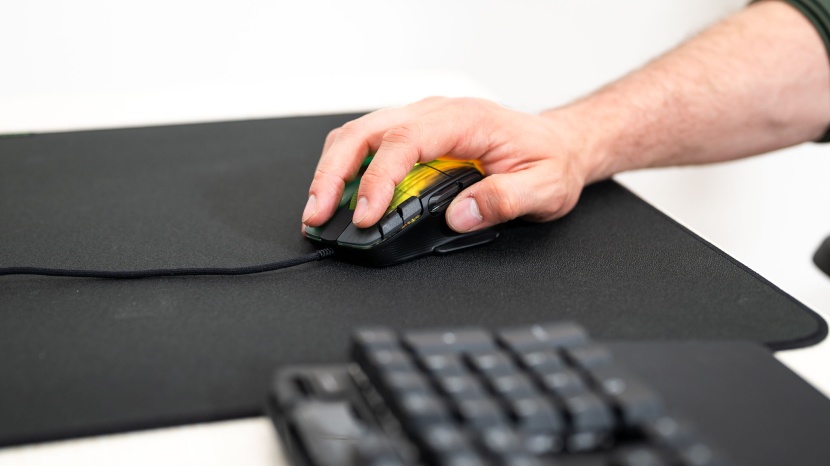The question of which gaming mouse is best is highly personal. To help you find your answer, we bought the best gaming mice on the market and tested them ourselves through analytical evaluation and real gameplay. Our assessments measured four key metrics that affect the experience of any PC gamer.
Performance
Excellent performance is a bare minimum requirement for any gaming mouse, and that's why we weigh it so heavily when rating our top contenders. We make note of whether a mouse uses mechanical or optical switches to register button actuation. We measure the weight of each mouse without its cord, minus the cord if it has one, with the understanding that a lighter mouse allows for faster movements and less chance of impeding on-screen actions via physical drag.
We then take our tests to the next level by precisely measuring sensitivity and responsiveness. This starts by examining each unit's sensor to determine if it provides flawless motion tracking — a feature that could be considered a basic criterion for making our list in the first place. We dive into a mouse's accompanying software to examine its options for adjusting dots per inch/counts per inch (DPI/CPI), inches per second (IPS), and polling rate. These are all specifications that convey a mouse's precision and tracking capability, which we test ourselves through actual use.
Customization
The ability to customize a gaming mouse's button configurations and lighting are what differentiates it from a typical office mouse at first glance. We know firsthand that these are important factors for gamers, so we weigh customizability highly as we examine each unit's lighting features and number of programmable buttons. In our testing, we evaluate the depth of the subject's button configuration options and whether or not you can save multiple configuration profiles — either in the accompanying software or in the mouse's onboard memory if it has it. If a mouse happens to provide options for adjusting unit weight or using it left-handed, we make sure to highlight those features in our reviews as well.
Ease of Use
When defining the “ease of use” metric, we bear in mind two common gaming scenarios. The first is the likelihood that the user will be eager to put their new weapon to work as soon as they pull it out of the package, with minimal setup necessary. The second is the inevitability that the user will put their mouse — and their own hands — through the wringer in many hours-long gaming sessions. That's why we test each mouse for usability, convenience, and comfortability.
To that end, we start by considering whether the mouse has a cord and whether the cord is likely to impede the gaming experience. The software for configuring the mouse, lighting, and button layouts also needs to be easy to navigate so that the user can make quick on-the-fly adjustments as needed.
Scroll Wheel
In the “Scroll Wheel” category, we actually evaluate the overall experience of the scroll wheel and main buttons in tandem. We test the buttons for gripability and reachability for the mouse's intended hand size, as well as the sound and feel of acuating the buttons themselves. We evaluate how it feels to click and scroll on the wheel, paying special attention to the level of resistance the mouse provides. The scroll wheel sound is also a factor in our tests, with silent scrolling being our ideal finish line.




